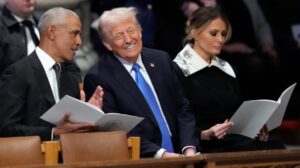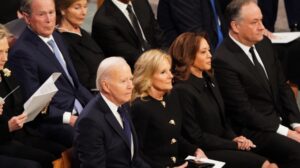The Dictatorship
Trump’s rhetoric about Jan. 6 rioters takes a weird and unexpected turn
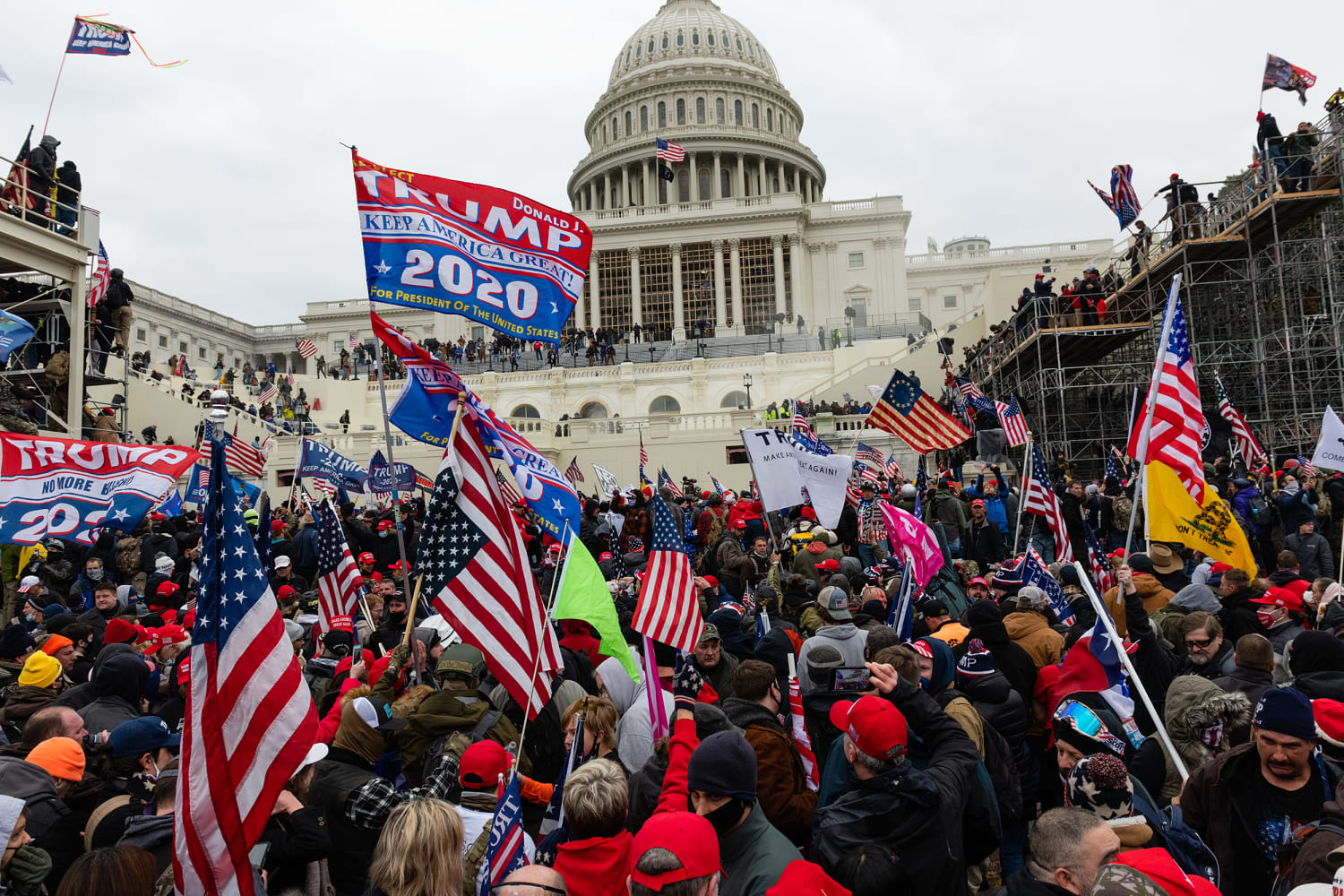
Donald Trump hasn’t exactly made an effort to hide his eagerness to pardon Jan. 6 criminals once he returns to the White House. In a recent post-election interview with Time magazine, the president-elect not only said he intends to issue these pardonshe added that he hopes to do so “maybe” within “the first nine minutes” of his second term.
There’s long been some question, however, about the scope of his plan. With this in mind, Trump’s comments during his latest Mar-a-Lago news conference raised plenty of eyebrows. The New York Times reported:
President-elect Donald J. Trump on Tuesday once again left open the possibility of offering pardons to some of his supporters who are serving prison time for assaulting police officers during the attack on the Capitol on Jan. 6, 2021. Mr. Trump, who campaigned on a pledge to restore “law and order,” said that the pardons he intended to offer could cover people charged and convicted of violent crimes.
Asked specifically about possible pardons for Jan. 6 criminals convicted of violent offenses, the Republican told reporters, “Well, we’re looking at it.” He added that he’ll be “making major pardons, yes.”
Complicating matters, these were not the only comments the president-elect made on the subject during his meandering Q&A.
- Asked if he’d pardon those who violently clashed with police officers, Trump replied, “Well, you know, the only one that was killed was a beautiful young lady named Ashli Babbitt,” and added that she was “shot for no reason whatsoever.” He was, of course, lying about the circumstances surrounding Babbitt’s death, and badly misstating the casualties from the Jan. 6 assault.
- Trump insisted that the rioters were unarmed, telling reporters, “This would be the only insurrection in history where people went in as insurrectionists with not one gun. … There wasn’t one gun that they found.” This was brazenly false.
- For the first time ever, Trump suggested that the Iranian-backed Hezbollah militants might’ve been involved in the Jan. 6 attackwhich was utterly bonkerseven for him.
- And Trump insisted that the FBI was directly involved in orchestrating the assault on the Capitol, adding“Nobody reported it.” In reality, of course, nobody reported on the conspiracy theory because the conspiracy theory has been thoroughly and completely discredited — including by the Justice Department’s inspector general.
To be sure, it might tempting to disregard the president-elect’s latest nonsense about the violent acts of those acting in his name. After all, it’s not as if Trump hasn’t lied about Jan. 6 before.
But with Inauguration Day just 12 days away, the Republican’s rhetoric continues to take on greater salience because, by his own admission, Trump is prepared to put a great many criminals back onto the street — not because they’re innocent, but because he sees them as political allies.
Steve Benen is a producer for “The Rachel Maddow Show,” the editor of MaddowBlog and an BLN political contributor. He’s also the bestselling author of “Ministry of Truth: Democracy, Reality, and the Republicans’ War on the Recent Past.”
The Dictatorship
Political violence is supposed to repel us. But Trump allies are acclimating to it.
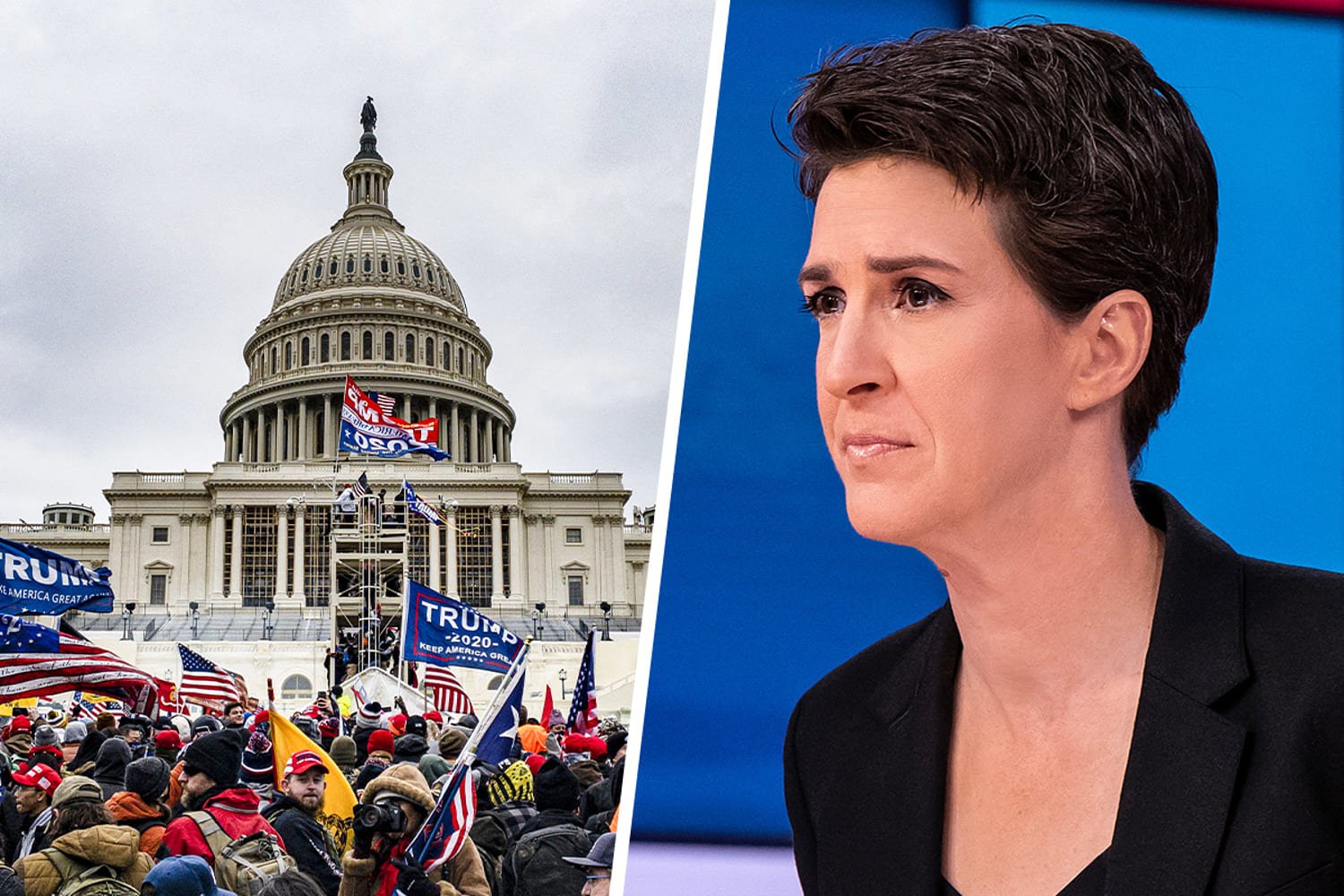
This is an adapted excerpt from the Jan. 6 episode of “The Rachel Maddow Show.”
In 2018, in Coral Gables, Florida, then-House Minority Leader Nancy Pelosi attended an event for Donna Shalala, a Democratic congressional candidate. In response, the local Republican Party in Miami-Dade County called for a protest of that event.
During that protest, members of the Proud Boys heckled and shouted expletives at Pelosi as she walked inside. That included Enrique Tarrio, the national head of the Proud Boys. At the time, Tarrio lived in South Florida. He now lives in federal prison after being convicted of seditious conspiracy and sentenced to 22 years for trying to overthrow the U.S. government. On Monday, Tarrio’s lawyer wrote to Donald Trump formally asking the president-elect to pardon his client.
Another attendee of that 2018 protest was Miami-Dade County Commissioner Kevin Cabrera, who can be seen on video pounding the door of Shalala’s campaign office. Trump just named Cabrera as his pick to be the next U.S. ambassador to Panama.
We’re supposed to have a sharp line that keeps violent intimidation on one side and politics on the other — never the twain shall meet.
Cabrera defended his conduct, saying he was just exercising his right to protest, but it’s worth remembering that, at the time, Republicans were actually embarrassed by the display. The head of the Miami-Dade Republican Party later apologized for being there. Other Republicans, including Florida Sen. Marco Rubio, condemned the event.
Just more than six years later, Rubio is about to be nominated to be Trump’s secretary of state, and the guy who pounded on a door to try to scare Pelosi is set to report to him as a U.S. ambassador.
The reason that is repellent, the reason that is repulsive, is because we’re supposed to have a sharp line that keeps violent intimidation on one side and politics on the other — never the twain shall meet.
On Monday, the certification of the 2024 presidential election took place in Washington. It happened, ministerially and ceremonially, like it’s supposed to. That contrasts with what occurred four years ago on Jan. 6 and makes clear the profound difference between the parties.
Had Democrats won the presidential election, many openly expected and prepared for the possibility of Republicans launching a violent revolt. But if Republicans had won, it was expected Democrats would peacefully accept and participate in the transfer of power. When there’s an expectation of violence if one side loses in an electoral contest, then the political parties in that country are no longer competing in democratic terms.
That’s part of what we’re contending with at this moment: How do we ever get back to competition in democratic terms? How do we get the Republicans to no longer see physical force and armed conflict as the way they’re going to get their way?
Well, one big step backward from that as a goal will be Trump’s promised pardons of the people who committed violence in his name that day. The argument now appears to not be about whether Trump will issue pardons to people who took part in the attack on the Capitol, but just how many of them will get the pardon.
That’s led publications as diverse as the HuffPost and The Wall Street Journal editorial page to try to front page the details of the actual crimes for which some of these people were convicted.
“Andrew Taake pepper-sprayed police officers defending the Capitol on Jan. 6, 2021 and hit one with a metal whip. He is serving 74 months at a federal prison in Beaumont, Texas,” HuffPost reported.
“Christopher Alberts carried a loaded 9 mm pistol onto Capitol grounds that day and hit police officers with a wooden pallet,” the report continued. “He is serving an 84-month sentence at the federal prison in Milan, Michigan.”
Another example from HuffPost: “Steven Cappuccio held his cell phone in his mouth so he could beat an officer using both of his hands, including with the officer’s own baton. He is doing 85 months at the federal prison in Forrest City, Arkansas.”
As the outlet noted, all three of those men will be back on the streets if Trump follows through on his pledge to pardon the Jan. 6 insurrectionists.
According to their analysis, “Of those serving a year or more in prison, a full 57% are there following a conviction in cases involving an assault on a police officer. In all, 83% serving a year-or-more were convicted of committing an act of violence.”
This means that, with few exceptions, the only people Trump could release from prison with his pardon power are those who attacked a police officer, possessed weapons or explosives, or were convicted of some other violent felony.
Then there’s the deeply conservative Wall Street Journal editorial page, which published a piece with the headline, “Trump’s Pardon Promise for Jan. 6 Rioters: Does it include the ex-meth trafficker who brought a metal baton and swung it at police?”
After describing some of the actions of these rioters in brutal detail, the editorial board goes on to write, “Pardoning such crimes would contradict Mr. Trump’s support for law and order, and it would send an awful message about his view of the acceptability of political violence done on his behalf.”
Now, I take issue with the Journal’s characterization that Trump has always supported law and order; he’s repeatedly praised violence in his name. But that last line is correct — it would send an awful message.
This Jan. 6, we saw the profound difference between the Democratic Party, offering democratic competition, win or lose, and the Republican Party’s threat of violence.
We saw the profound difference between the Democratic Party, offering democratic competition, win or lose, and the Republican Party’s threat of violence.
Yes, there’s an unnerving, unsettling, fight to remember what actually happened — to be real about how disgusting it all was — while the Trump movement and the Republicans try to say the attack was a bunch of heroes who have been wrongly persecuted for doing nothing wrong.
But there is an instrumental and practical question at hand, too. Which is, what happens to the future of political violence — in the very short term — if the people who committed violence on the president-elect’s behalf are sprung from prison and celebrated as vindicated heroes when Trump takes office again?
The idea that there is permeability between violence and politics, that what is supposed to be civic hallowed ground, is fouled by the rioting and looting we saw take place, in Trump’s name, on Jan. 6, 2021.
That is supposed to repel us and disgust us — indelibly. We are never supposed to acclimate to that. But the Trump side has. And so now, four years later, with just two weeks until Trump is back in power, we must be prepared for what could happen next.
Allison Detzel contributed.
The Dictatorship
Can Republicans actually change the name of the Gulf of Mexico?
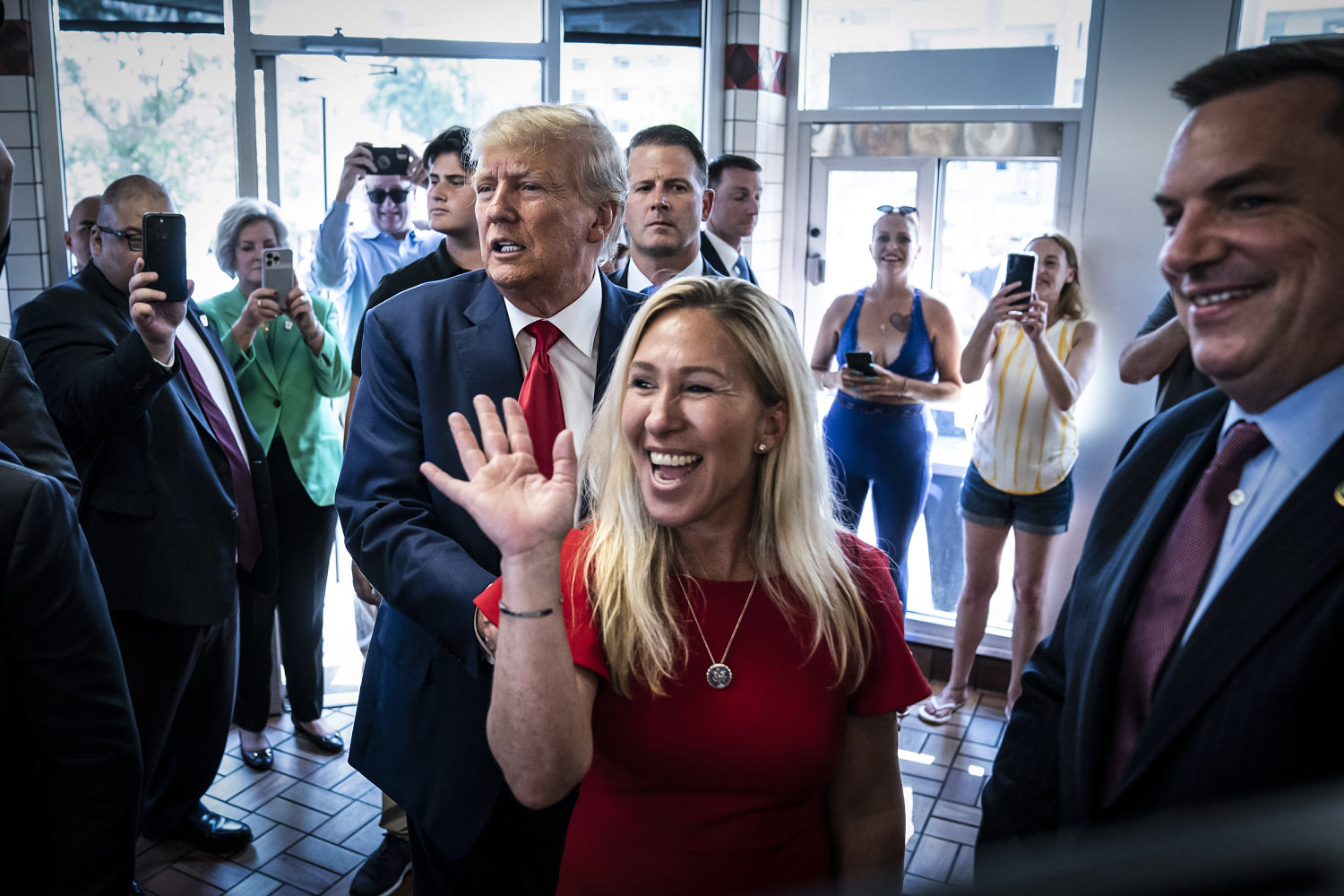
Donald Trump made news on multiple fronts during his latest Mar-a-Lago press conference, but arguably the strangest development was the president-elect’s announcement about the Gulf of Mexico.
According to the Republican“we” will soon be “changing the name of the Gulf of Mexico to the Gulf of America.” He added that he believes the new name has “a beautiful ring” to it, adding that as far as he’s concerned, rebranding the body of water would be “appropriate.”
By all appearances, Trump was quite serious about this and gave no indication that he was kidding.
Soon after, Rep. Marjorie Taylor Greene appeared on a far-right podcast and said she had already directed her staff to “immediately draft legislation” to implement the president-elect’s latest priority. “Congress has to do this,” the Georgia Republican declaredadding: “You better bet we are absolutely going to change the Gulf of Mexico to the Gulf of America. Let’s go!”
It’s difficult to say with confidence whether, and to what extent, the incoming president and his allies will pursue this goal. After all, Trump, who has a notoriously short attention span, floats all kinds of weird ideas that he routinely discards. Similarly, hundreds of legislative proposals are introduced every year that go completely ignored.
In other words, Republicans such as Trump and Greene might like the idea of changing the name of the Gulf of Mexico, but that doesn’t necessarily mean there will be any serious follow-through.
But while the political world waits to see whether the GOP invests any meaningful time and effort into this weird goal, a related question hangs overhead: Is this even possible?
My BLN colleague Zeeshan Aleem”https://www.BLN.com/opinion/BLN-opinion/trump-gulf-mexico-america-greenland-panama-canal-rcna186632″ target=”_blank”>made the case that this is at least theoretically possible, since U.S. presidents have the authority to “change the names of landmarks.”
The Washington Post published a related report along these lines:
The U.S. Board on Geographic Names is a federal interagency organization that is responsible for maintaining uniform geographic name usage throughout the federal government. The board operates under the interior secretary. The board’s Foreign Names Committee is responsible for standardizing foreign place names. The committee is composed of representatives from federal agencies, including several appointees specializing in geography and cartography. Members are appointed every two years. While the BGN does not create names for geographical features, it approves or rejects names proposed by others based on its established policies.
Trump’s choice to serve as the interior secretary, for what it’s worth, is North Dakota Gov. Doug Burgum, who seems eager to go along with the incoming president’s wishes.
All of which is to say, it is at least possible for Republicans to pursue such a name change, though it would lead to a related challenge: As Zeeshan’s piece added, if the Trump administration succeeded on this, “that doesn’t mean other countries will go along with changing the name of a massive body of water whose name dates back more than four centuries.”
As for how our neighbors to the south feel about all of this, Bloomberg News reported that Mexico’s president responded to Trump’s idea by suggesting that instead of changing the name of the Gulf, she’s wondering about renaming part of the United States.
A day after the incoming US president said the body of water between his country, Mexico and the Caribbean should be called the “Gulf of America,” Claudia Sheinbaum presented early maps of the Americas at her daily press briefing. The Gulf of Mexico’s name has held since the early 17th century and is recognized by the United Nations, she said. Sheinbaum also joked that states including California and Texas could revert to their former name, “America Mexicana.”
“It sounds good, doesn’t it?” Sheinbaum rhetorically asked reporters.
Steve Benen is a producer for “The Rachel Maddow Show,” the editor of MaddowBlog and an BLN political contributor. He’s also the bestselling author of “Ministry of Truth: Democracy, Reality, and the Republicans’ War on the Recent Past.”
The Dictatorship
‘Apocalyptic’: What to know about the massive, fast-moving wildfires in the L.A. area
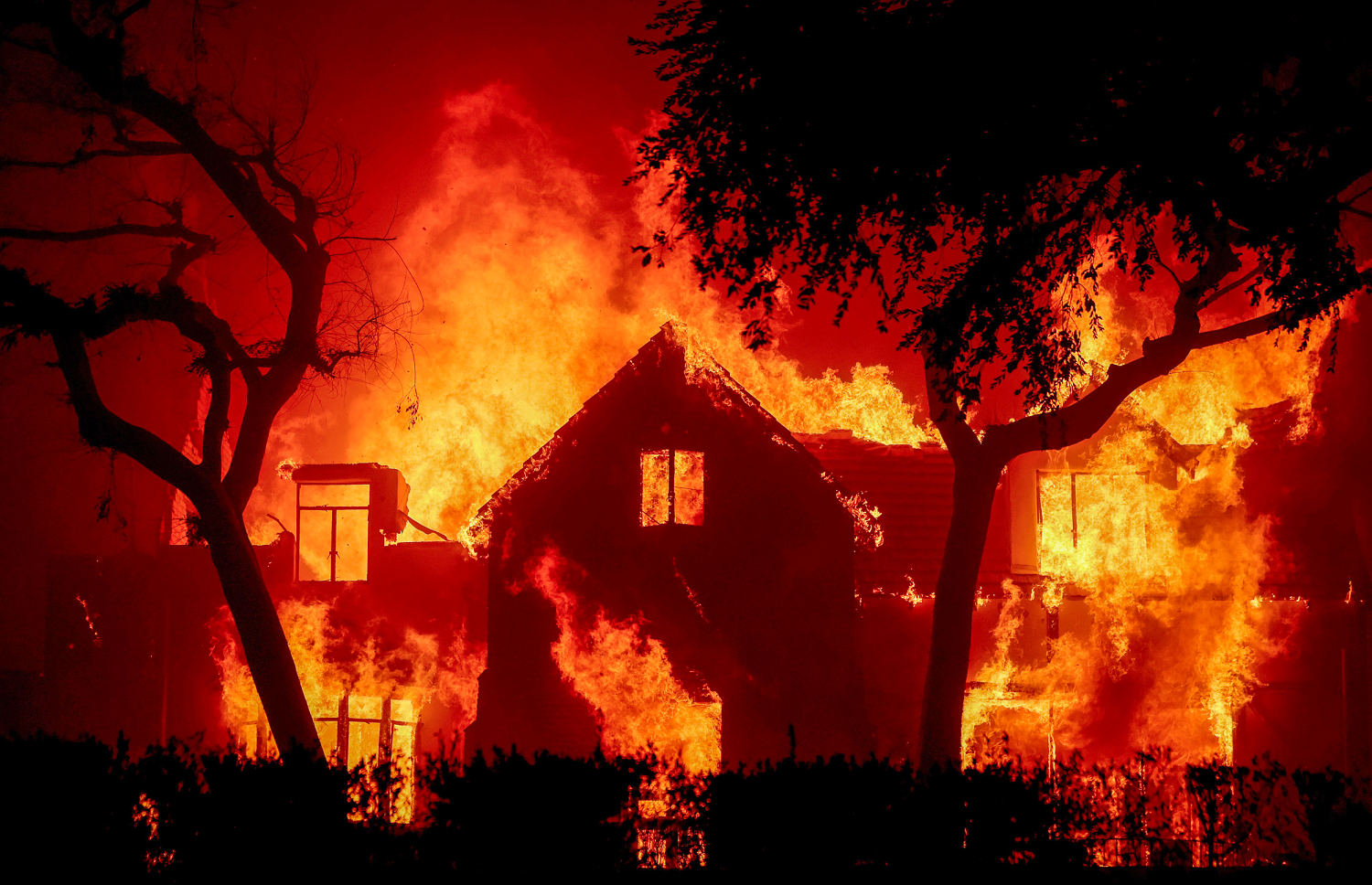
Firefighters are battling massive wildfires in Southern California that had burned through thousands of acres by Wednesday morning and led to mandatory evacuation orders for tens of thousands of residents.
The Palisades Firethe Eaton Fire and the Hurst Fire swept through the Los Angeles area beginning Tuesday. Fueled by the Santa Ana windsthe blazes grew overnight, destroying houses, commercial buildings and local landmarks.
Cal Fire Battalion Chief Brent Pascua described the scene as “apocalyptic.” Abandoned cars were seen burning along the road after residents left their vehicles behind to flee the Palisades Fire on foot, NBC Los Angeles reported Tuesday.
Where are the fires happening?
The fires broke out in multiple locations in the Los Angeles area. L.A. County Fire Chief Anthony C. Marrone saidin a Wednesday morning briefing that the raging wildfire in the affluent Pacific Palisades area near the coast had burned “well over 5,000 acres.” To the east, the Eaton Fire, which sparked Tuesday evening, doubled in size overnight and has destroyed more than 2,200 acres, according to the California Department of Forestry and Fire Protection(Cal Fire). The Hurst Fire to the north has swept through approximately 500 acres.
The National Weather Service warned overnight that the situation was “extremely dangerous” and cautioned residents to “leave immediately if asked to do so by your local emergency officials.”
As of Wednesday morning, all three fires were 0% contained, according to Cal Fire. Marrone saidtwo people have been killed in the Eaton Fire so far.
Who is responding to the fires?
Gov. Gavin Newsom proclaimed a state of emergency Tuesday night. More than 1,400 firefighters have been deployed to Southern California to battle the blazes, as well as emergency officials and first responders, he said.
Mandatory evacuation orders are in place for at least 80,000 people, NBC News reported. A number of shelters have been established in the Los Angeles area for those fleeing the fires.
The Federal Emergency Management Agencyhas approvedfunds to support the areasaffected by the fires and to help reimburse the state for firefighting costs.
President Joe Biden saidhis administration is in touch with state and local officials about the fast-moving situation.
Why are the fires burning at the same time?
Southern California is no stranger to destructive wildfires, and a lethal combination of dry conditions and powerful winds this week have contributed to the blazes.
The fires have grown rapidly because of the Santa Ana winds, with gusts of above 80 mph recorded in some parts of the L.A. area, according to The Weather Channel.
Will the situation get worse?
Most likely. The NWS has said the most extreme conditions are expected Wednesday morning.
“Winds should gradually weaken somewhat through the day, but critical fire weather conditions are expected to persist into Thursday,” the agency said.
Two more fires broke out in Southern California early Wednesday: the Woodley Fire in the Sepulveda Basin, burning approximately 75 acres, and the Tyler Fire in Coachella, which has burned 11 acres and been 50% contained.
This is a developing story. Check back for more details.
Clarissa-Jan Lim is a breaking/trending news blogger for BLN Digital. She was previously a senior reporter and editor at BuzzFeed News.
-

 The Josh Fourrier Show2 months ago
The Josh Fourrier Show2 months agoDOOMSDAY: Trump won, now what?
-
Economy2 months ago
Fed moves to protect weakening job market with bold rate cut
-
Economy2 months ago
Harris dismisses Trump as ‘not serious’ on the economy in BLN interview
-
Economy2 months ago
It’s still the economy: What TV ads tell us about each campaign’s closing message
-
Economy2 months ago
Biden touts economic gains, acknowledges a long way to go
-
Health Care2 months agoAnti-abortion forces broke the left’s post-Roe winning streak, but 7 more states enacted protections
-
Congress2 months ago
Trump’s border czar promises ‘hell of a lot more’ deportations than first term
-
Health Care2 months ago
More abortion ballot measures are set to pass. Then state courts will have their say.




